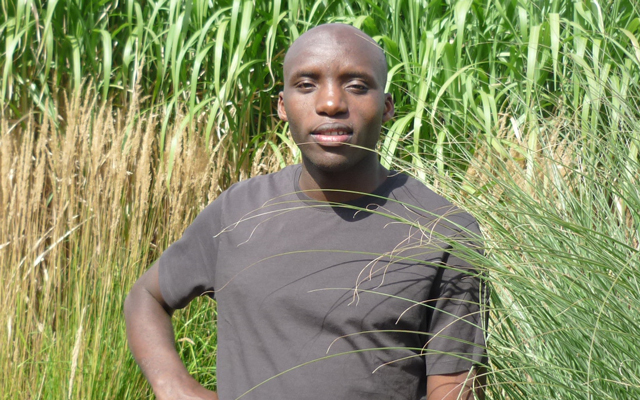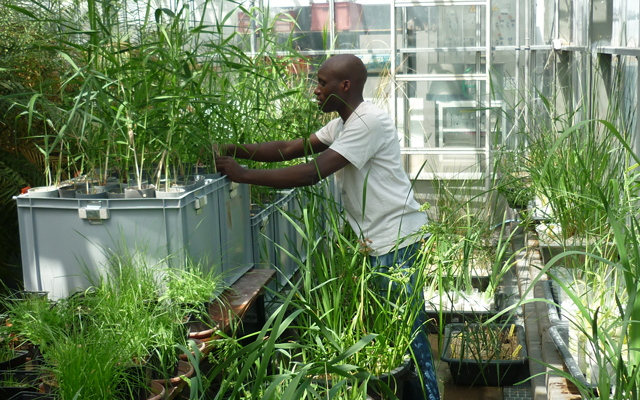Few things better than plants can help clean the environment in a sustainable way. Some plants have the ability to absorb toxic elements from the soil and water without being affected by these substances. For this reason they may be used in what is called phytoremediation, a technique that can be effective in the restoration of contaminated sites.
The mineral-extraction industry is particularly wealthy in Africa and, for many countries, mining represents a substantial contribution to the gross domestic product. In Rwanda, mining of coltan, gold and other minerals accounts for 30% of total exports. But especially when mines are exhausted, they pose a threat to people and environment, as mining operations heavily degrade the soil and large surfaces of land remain contaminated by metals.
"Rwanda has more than five degraded mining sites that may become a serious problem for people who grow live nearby," said Florien Nsanganwimana during his presentation at the TWAS's 27th General Meeting in Kigali, Rwanda.
His lecture on 16 November 2016 was part of the symposium on Science and Technology in Rwanda, chaired by Romain Murenzi, Director of UNESCO’s Division of Science Policy and Capacity Building/Natural Sciences Sector. Murenzi formerly served as TWAS executive director and as minister of science and minister of education in Rwanda.
Nsanganwimana is a lecturer in biological sciences at the University of Rwanda-College of Education who has expertise in restoration ecology. He has developed an interest in this field during his master's degree studies at the University of Bordeaux from 2009 to 2011. After earning his PhD from Lille University in France in 2014, he moved back to Rwanda.
"I decided to develop a project to recover degraded mining sites in environment-friendly ways because, quite often, developing countries lack scientific-based policies to promote the rehabilitation of degraded ecosystems, and mining operators do not have adequate skills to clean up by themselves the polluted environments," Nsanganwimana said. "These sites, in fact, contain toxic trace metallic elements such as lead, cadmium, zinc or other rarer elements that are a menace for people, if ingested through food and water or inhaled as dust."
Respiratory diseases and cancers are some of the possible consequences. A good solution would not call for farmers to stop using their lands, but rather to replace common food crops with economically valuable ones that can reduce the pollutants' hazard. Nsanganwimana's presentation at TWAS's General Meeting raised much interest, as it was an example of how knowledge of local problems and resources can yield effective solutions that are both scientifically valuable and cost-effective.
In fact, Nsanganwimana's project started with the identification of plants that would be suitable for phytoremediation. He describes these plants as a "green liver system" because, like a mammal's liver, they can absorb and process toxins that would otherwise hurt the environment. Phytoremediation is a technique that uses plant varieties that are able to absorb metals and other elements without being affected by them. These plants, as the scientist explained, belong to Rwanda's local traditions and popular knowledge, but before open field tests they need to be tested with a scientific approach, in confined environments such as greenhouses.
Some examples are the perennial grass Miscanthus, which features high productivity and high tolerance to stressors; it produces abundant biomass that can serve for multiple uses: energy, construction and mulch, to name a few. Another example is Arundo donax – its resistance in contaminated soils combined with high productivity makes it a good candidate as a large biomass producer, even under harsh conditions. Biomass is organic matter derived from living, or recently living organisms, which can be used to produce energy.
"Plants can store the toxic elements at different levels: roots, stems or aerial parts, and it is important to know where contaminants may go when it comes to decide how to use the plant for other purposes," he observed. Knowing their storage sites allows a choice whether to further employ the plant as a source of biomass for energy purposes, or as forage for animals after metal extraction from the plant.
Sometimes plants are not able to remove more than one pollutant at a time. In those cases, as Nsanganwimana said, it is better to apply so-called phytostabilization: a technique that mainly exploits plant roots and associated microorganisms to prevent environmental dispersion of contaminants.
"In general, phytotechnologies (plant-based remediation techniques) provide many other economic and ecological benefits," Nsanganwimana pointed out. They include carbon sequestration, increased biodiversity, limited greenhouse gas emissions, reduced soil erosion and groundwater contamination, as well as landscape beauty. Restoring functional ecosystem services of contaminated land, he concluded, turns out to be a sustainable, cost-effective option to reduce pollutant exposure. To this end, phytomanagement, which uses the phytotechnologies, is a very promising option for Rwanda.
Cristina Serra

